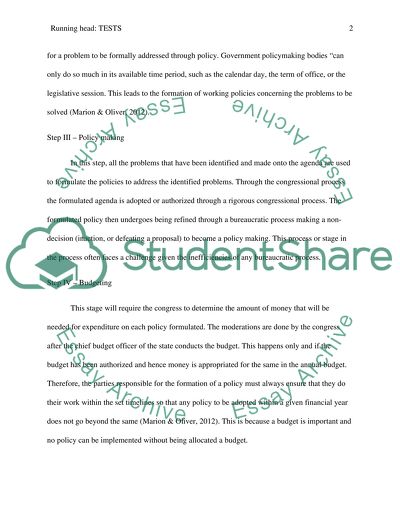Cite this document
(“Analysis of the five stages of the public policy process Essay”, n.d.)
Retrieved de https://studentshare.org/psychology/1402643-tests
Retrieved de https://studentshare.org/psychology/1402643-tests
(Analysis of the Five Stages of the Public Policy Process Essay)
https://studentshare.org/psychology/1402643-tests.
https://studentshare.org/psychology/1402643-tests.
“Analysis of the Five Stages of the Public Policy Process Essay”, n.d. https://studentshare.org/psychology/1402643-tests.


